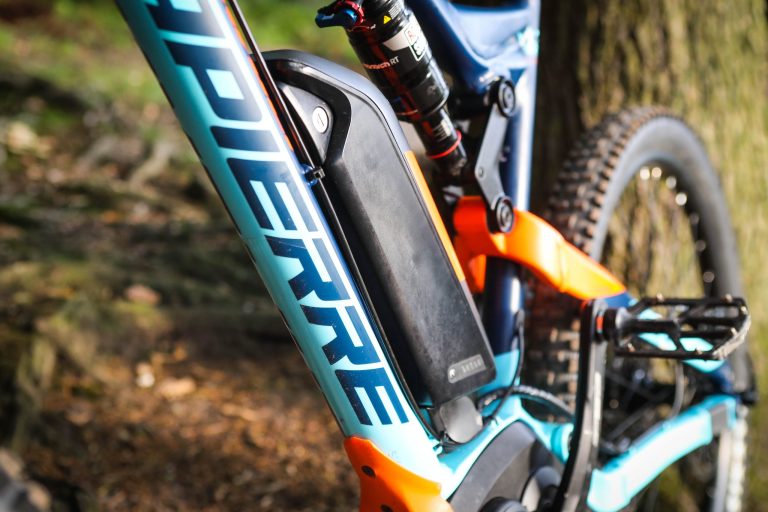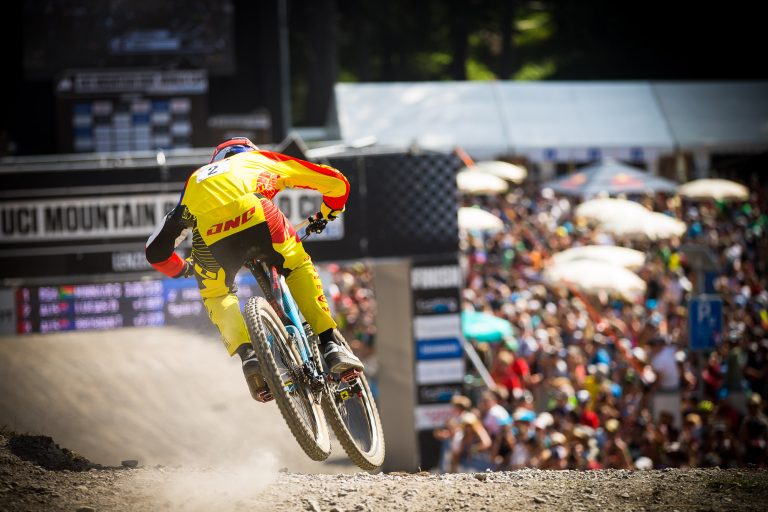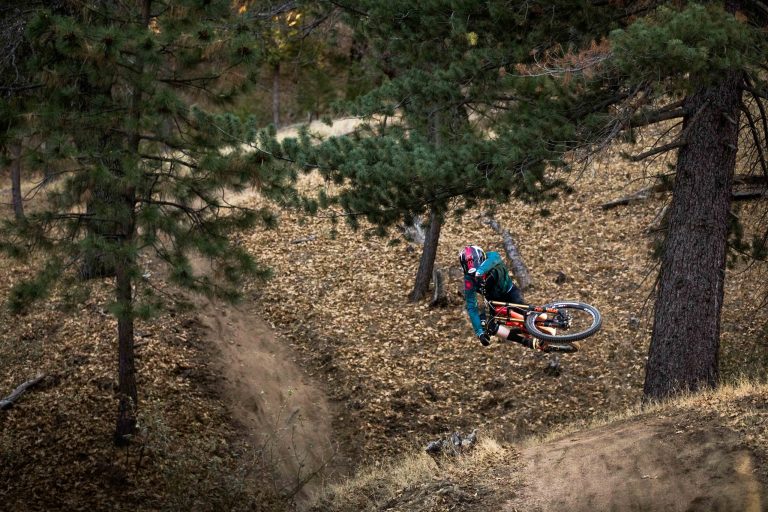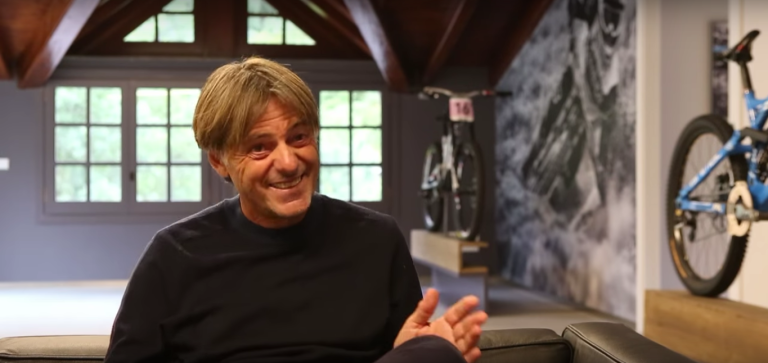
From Dirt Issue 147 – May 2014
Words by Nick Hamilton. Photos by Duncan Philpott.
Two of something? A fight between two? Or two bikes raced head to head, ridden by two riders, on two tracks, twice. This is Dual.
I have organised lots of Dual Slalom races over the past few years. It all started back in 2009 at Steve Peat’s Wharncliffe Weekender charity do. The lads had built a pimp new dual track with a great series of berms and tables but no one was stepping up to actually run the race. At the time, I had never raced dual let alone organised a race before, however, I loved it; the format, the racing, the competition. I was hooked. Dual then became a staple of mate’s races because it can be so simple to do. A few cut down pieces of overflow pipe for posts laid out in a some woods or on grassy field, two stopwatches, some mates and you have yourself a race. Add in some bike lights and you can do it all winter shortening those long miserable nights.
 But this is nothing new. Dual racing on bikes derives from the snow version and has been raced by kids and big kids alike in parks and woodlands in some form I’m sure as long as bikes have been ridden. Dual Slalom goes back a long way in to the annals of mountain bike history. The first mountain bike World Champion, Greg Herbold, won the first dual slalom race at Mammoth Mountain in 1987. To expand this historical perspective I consulted one of the only riders still racing today that was around near the ‘start’… Steve Peat. Steve remembers racing his first proper dual race, as in a race not in a grass field, 20 years ago back in 1994. It was over in the states at one of the NORBA rounds. The yanks seem to have taken their dual much more seriously than the Brits having a national series which ran alongside DH and with some serious prize money attached. Names like Eric Carter, Mike King, Brian Lopes, ‘Pistol’ Pete Loncarevich and Shaun Palmer were all dominating. Steve also explained the evolution. What started as dual slalom, with two distinct tracks, raced twice and with the fastest combined time winning, moved on. It became ‘dual’ where both duellers were on the same track at the same time. Steve said “dual ended up with the guy who was behind just taking out the person in front because whoever got up first would get over the line”. This led on to the development of 4X because if you took someone out, there were two more people who could still steal the glory.>>
But this is nothing new. Dual racing on bikes derives from the snow version and has been raced by kids and big kids alike in parks and woodlands in some form I’m sure as long as bikes have been ridden. Dual Slalom goes back a long way in to the annals of mountain bike history. The first mountain bike World Champion, Greg Herbold, won the first dual slalom race at Mammoth Mountain in 1987. To expand this historical perspective I consulted one of the only riders still racing today that was around near the ‘start’… Steve Peat. Steve remembers racing his first proper dual race, as in a race not in a grass field, 20 years ago back in 1994. It was over in the states at one of the NORBA rounds. The yanks seem to have taken their dual much more seriously than the Brits having a national series which ran alongside DH and with some serious prize money attached. Names like Eric Carter, Mike King, Brian Lopes, ‘Pistol’ Pete Loncarevich and Shaun Palmer were all dominating. Steve also explained the evolution. What started as dual slalom, with two distinct tracks, raced twice and with the fastest combined time winning, moved on. It became ‘dual’ where both duellers were on the same track at the same time. Steve said “dual ended up with the guy who was behind just taking out the person in front because whoever got up first would get over the line”. This led on to the development of 4X because if you took someone out, there were two more people who could still steal the glory.>>





